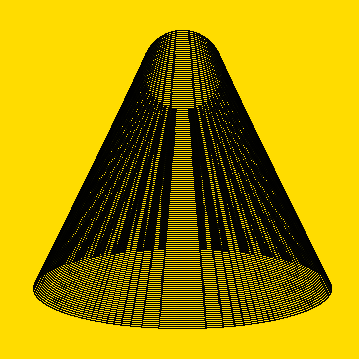Learning to create images with computer code
DOI:
https://doi.org/10.7577/formakademisk.4633Emneord (Nøkkelord):
Processing, programming, tinkering, learning, digital imagesSammendrag
Programming is becoming a part of the school curricula in Norway both in lower and upper secondary education – this includes subjects such as art, design and craft. What can programming contribute to the learning processes of these subjects? ‘Tinkering’ is a creative phase in a learning/working process, emphasising both creation and learning. In this project, visual images are created via computer programming to enhance the main author’s learning. The process is structured into stages. The important phases of the learning process are realised as a result of tinkering with existing codes. An important discovery for the learner, and one key aspect of programming images is that, as a mode, it opens up ways to create repetitions effectively, resulting in various patterns. This turned out to be motivating for the learner. This paper discusses tinkering as a learning process that is relevant to programming within art, design and craft education.
Referanser
Antonsen, R. (2018). Card Shuffling Visualizations. In Proceedings of Bridges 2018: Mathematics, Art, Music, Architecture, Education, Culture (pp. 451–454). http://archive.bridgesmathart.org/2018/bridges2018-451.html
Berland, M. (2016). Making, tinkering and computational literacy. In K. Peppler, E. R. Halverson, & Kafai, Y. B. (Eds.), Makeology: Makers as learners (Vol. 2, pp. 196–205). Routledge. https://doi.org/10.4324/9781315726496-12
Berland, M., Martin, T., Benton, T., Smith, C. P., & Davis, D. (2013). Using learning analytics to understand the learning pathways of novice programmers. Journal of the Learning Sciences, 22(4), 564 – 599. https://doi.org/10.1080/10508406.2013.836655
Bocconi, S., Chioccariello, A. and Earp, J. (2018). The Nordic approach to introducing Computational Thinking and programming in compulsory education. (Report prepared for the Nordic@BETT2018 Steering Group). https://doi.org/10.17471/54007
diSessa, A. A. (2001). Changing Minds : Computers, learning and literacy. MIT Press. https://doi.org/10.7551/mitpress/1786.001.0001
European Schoolnet. (2017). Country Report on ICT in Education – Norway. http://www.eun.org/it/resources/country-reports
Kuehni, R. G. (2004). Color: An introduction to practice and principles. https://doi.org/10.1002/0471687448
Ludvigsen, S. (2014). Elevenes læring i fremtidens skole – Et kunnskapsgrunnlag : Utredning fra et utvalg oppnevnt ved kongelig resolusjon 21. juni 2013. Kunnskapsdepartementet.[Pupils' learning in the future school – A knowledge base : Report from the committee appointed by Royal Resolution on 21 June 2013]. https://www.regjeringen.no/no/dokumenter/NOU-2014-7/id766593/
Lær kidsa koding [Teach the Kids How to Code]. (n.d.). Oppgaver [Tasks]. https://oppgaver.kidsakoder.no
NOU 2015: 8. (2015). The School of the Future — Renewal of subjects and competences. Ministry of Education and Research.https://www.regjeringen.no/en/dokumenter/nou-2015-8/id2417001/
Reas, C., & Fry, B. (2006). Processing: A programming handbook for visual designers and artists. MIT Press.
Reas, C., & Fry, B. (2009). Processing: Programming for designers and artists. Design Management Institute Review, 20(1), 52–58. https://doi.org/10.1111/j.1948-7169.2009.tb00225.x
Reas, C., & Fry, B. (n.d.). Processing. https://processing.org
Regjeringen [The Government]. (2017). Åpner for koding som valgfag ved alle skoler. [Coding as an elective in all schools]. https://www.regjeringen.no/no/aktuelt/fra-hosten-kan-alle-ungdomskoler-tilby-programmering-som-valgfag-til-elevene/id2552808/
Regjeringen [The Government]. (2018). Fornyer innholdet i skolen [Press release]. [Renewing the content in schools]. https://www.regjeringen.no/no/aktuelt/fornyer-innholdet-i-skolen/id2606028/?expand=factbox2606073
Scardamalia, M., & Bereiter, C. (2010). A brief history of knowledge building. Canadian Journal of Learning and Technology, 36(1). https://doi.org/10.21432/T2859M
Schön, D. (1991). The reflective practitioner: How professionals think in action. Avebury. (Original work published 1983)
Sennett, R. (2008). The craftsman. Yale University Press.
Utdanningsdirektoratet. (2018). Yrkesfaglige utdanningsprogram fra 2020 [Vocational education programs from 2020]. https://www.udir.no/laring-og-trivsel/lareplanverket/forsok-og-pagaende-arbeid/ny-tilbudsstruktur-og-nye-lareplaner-pa-yrkesfag/ny-tilbudsstruktur-i-fag--og-yrkesoplaringen/

Nedlastinger
Publisert
Hvordan referere
Utgave
Seksjon
Lisens
Opphavsrett 2021 Peter Haakonsen , Laila Belinda Fauske

Dette verket er lisensiert under Creative Commons Attribution-NoDerivatives 4.0 International License.
- Forfatteren(e) beholder sin opphavs- og kopieringsrett til eget manuskript, men gir tidsskriftet varig rett til 1) å fremføre manuskriptet for offentligheten i den opprinnelig publiserte digitale form, og 2) å registreres og siteres som første publisering av manuskriptet.
- Forfatteren må selv forvalte sine økonomiske kopieringsrettigheter overfor eventuell tredjepart.
- Tidsskriftet gir ingen økonomisk eller annen kompensasjon for innsendte bidrag, medmindre det er gjort særskilt avtale om dette med forfatteren(e).
- Tidsskriftet plikter å arkivere manuskriptet (inklusive metadata) i den opprinnelig publiserte digitale form, i minst ett dertil egnet åpent tilgjengelig langtidsarkiv for digitalt materiell, som for eksempel i de norske universitetenes institusjonsarkiv innen rammen av NORA-samarbeidet.
Verket vil bli publisert OpenAccess med en Creative Commons 4.0-lisens som tillater alle å lese, dele og tilpasse innholdet, også kommersielt, under lisensvilkårene:
Dette verket må tilskrives/ krediteres på riktig måte, en lenke må gis til CC-BY 4.0-lisensen, og endringer som er gjort må angis på en rimelig måte, men ikke på noen måte som antyder at lisensgiveren støtter deg eller din bruk.



